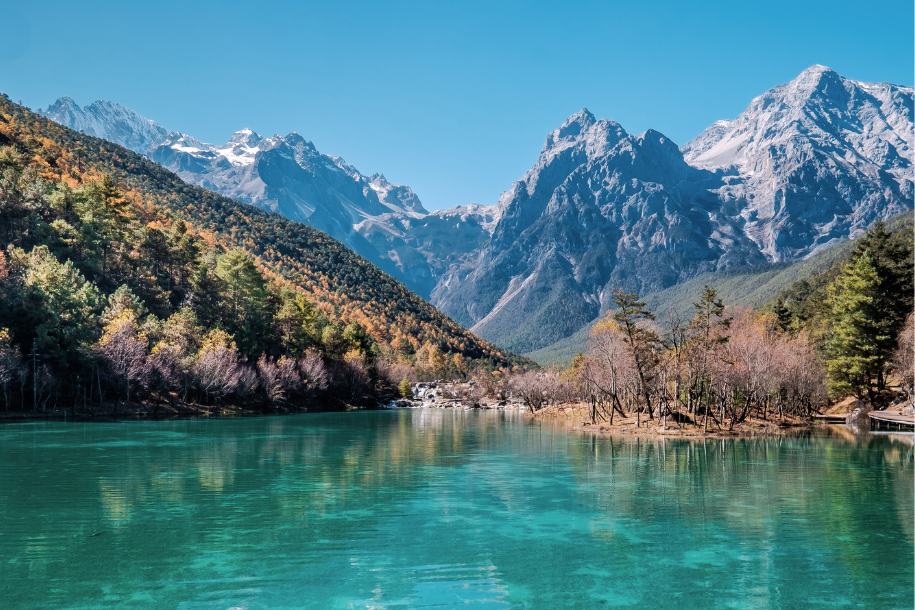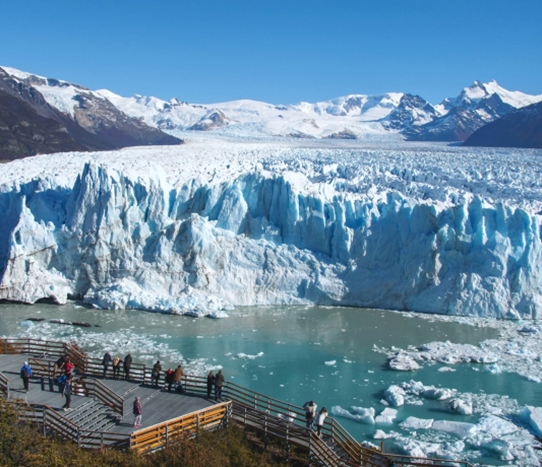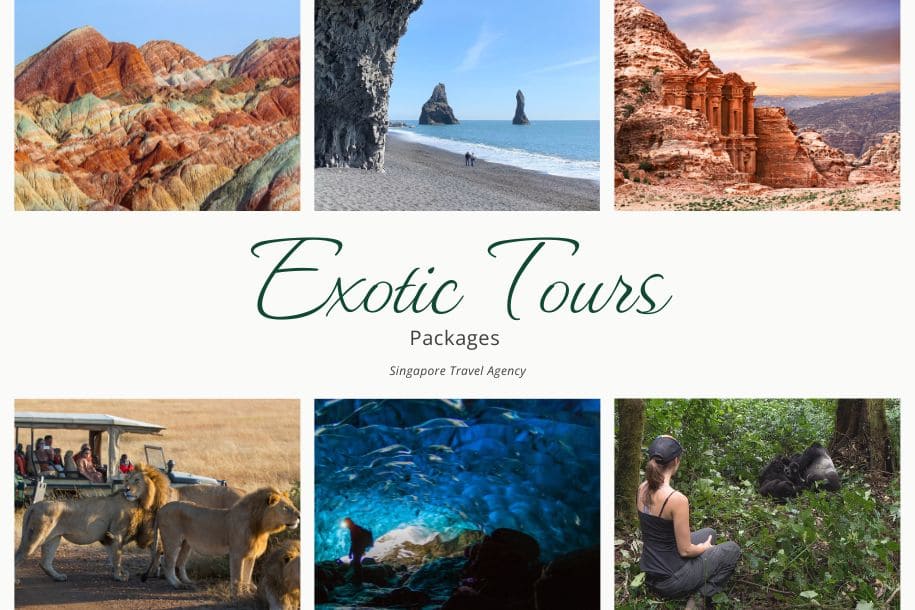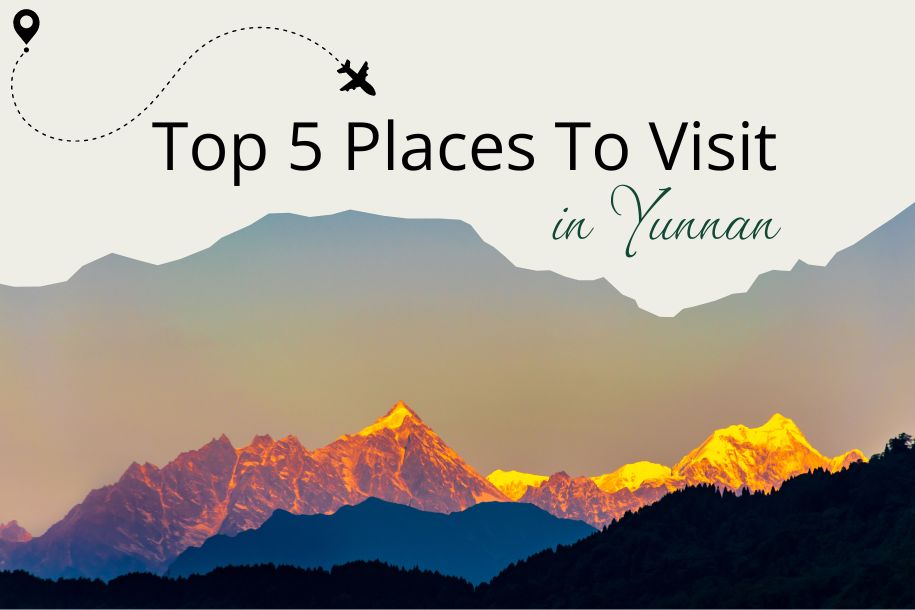China covers a vast area and offers enough diversity to warrant multiple visits. For first-time travellers, knowing which cities to start with can be challenging. We prefer to recommend your starting point based on your travel interests and desired experiences.
Generally, we classify China’s best highlights into categories such as nature and landscapes, history and culture, as these are the most common reasons our clients request tailor-made private tour packages to China.
We will also address common questions about China and provide tips on navigating payment systems, mobile connectivity with international apps like WhatsApp and Google, and toilet facilities, which often concern our guests. Here, we share first-hand knowledge about China and some of the tailor-made holiday experiences and destinations we arrange for our clients.
Where Should I Go For The First Time?
Given China’s vast geographical area, there is a wide variety of landscapes and diverse cultural experiences to explore. While most people tend to start with major cities like Beijing and Shanghai, you don’t have to follow the crowd if other regions interest you more. For first-time visitors, consider visiting the highlights in the map. We will also provide more details on each attraction below.
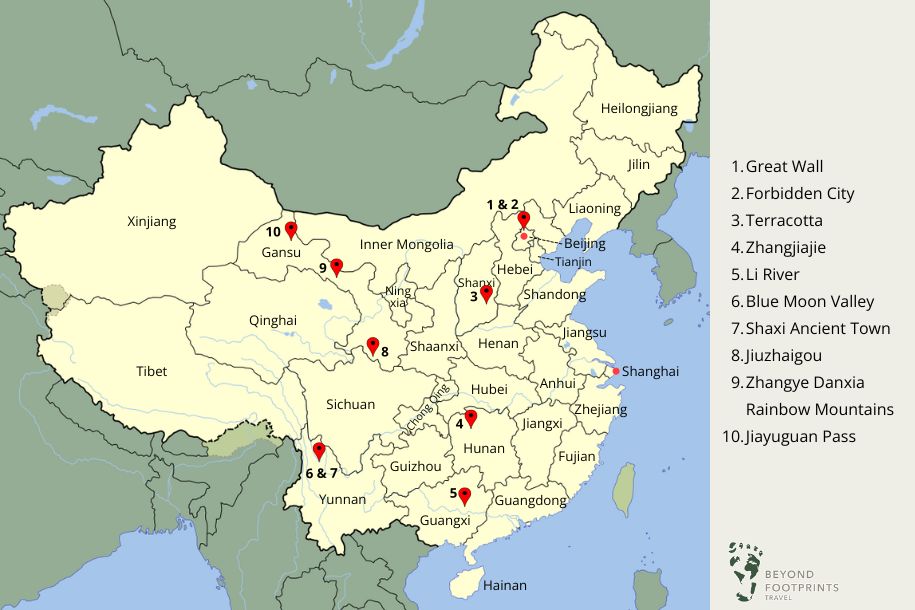
If several areas catch your eye, just know that we can find ways to include them in your personalized private luxury tour to China. We will also advise you on other nearby attractions to consider for your travel journey, ensuring a comprehensive and enriching experience.
Now, let us take a look at some of the most popular highlights China has to offer.
Places To Visit In China For Nature & Landscapes & The Best Time To Go
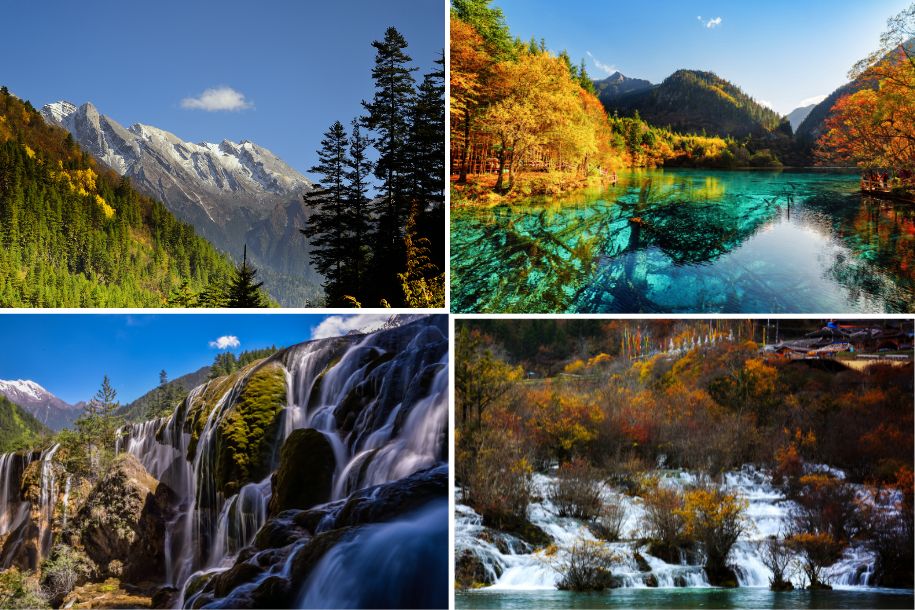
Jiuzhaigou, Sichuan
This Chinese natural wonder will impress you with its numerous multi-coloured lakes. Due to sunlight refraction and mineral deposits, each lake at Jiuzhaigou displays a spectrum of colours, seamlessly shifting from emerald green to sapphire blue, and from rosy red to apricot yellow. The appearance of each lake changes not only throughout the day but also across different months and seasons, giving off a different vibe with each visit.
Best Time to Visit: From September to November.
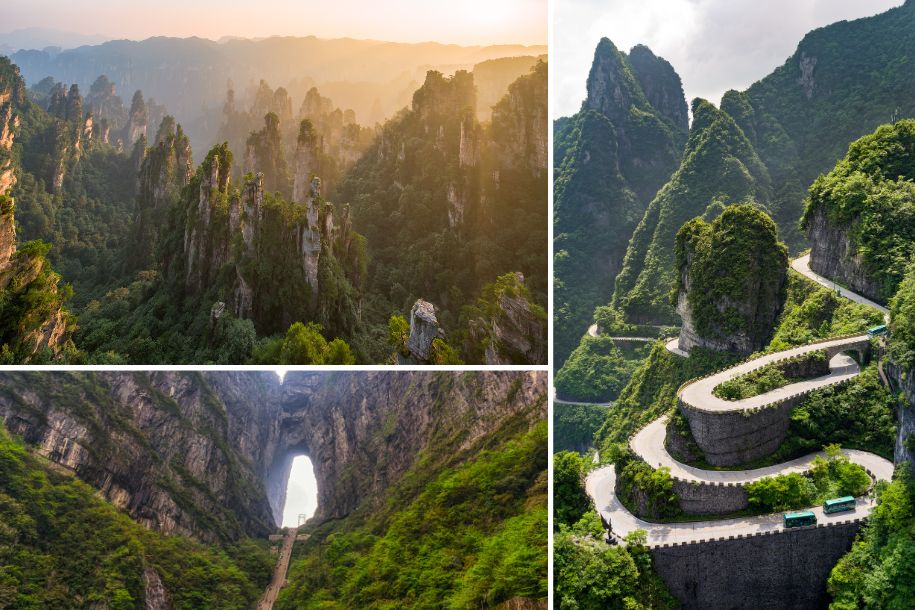
Zhang Jia Jie, Hunan
Zhangjiajie National Forest Park is undoubtedly one of the most beautiful places in China, renowned for its unique karst landscape of quartz sandstone peak forests. With 98% forest coverage, the park boasts magnificent mountain forests and diverse wildlife. In addition to being the famous filming location for “Avatar,” the park features the world’s longest cable car ride, the impressive Tianmen Cave, and the renowned 99 Bends—a series of winding mountain passages set against a stunning backdrop of extraordinary peaks, deep valleys, and lush forests, often shrouded in mist and clouds.
Best time to visit: From March to May or September to October.
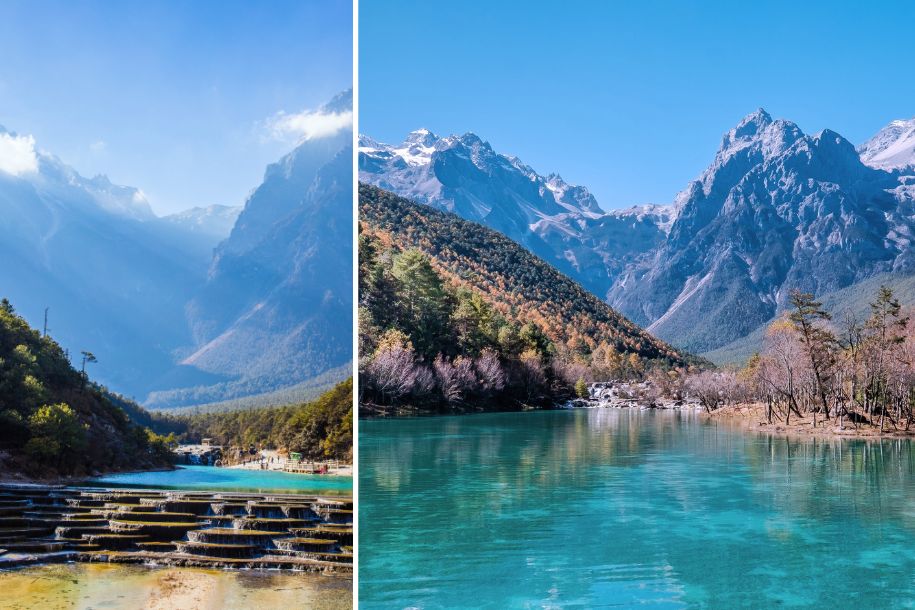
Blue Moon Valley, Yunnan
Nestled in the towering mountains of Lijiang is an impossibly turquoise river originating from the melting snow of Jade Dragon Snow Mountain. A trip to Jade Dragon Snow Mountain isn’t complete without visiting Blue Moon Valley, located at its entrance. On clear days, the water in Blue Moon Valley shines with a charming azure hue. The crescent-shaped valley resembles a blue moon nestled at the foot of Jade Dragon when viewed from a distance. The turquoise river cascades through beautiful terraced valleys, forming four large colourful lakes and dozens of miniature whitewater waterfalls. Surrounded by flowers, gorges, and meadows, Blue Moon Valley stands out as one of the most captivating scenic spots in Lijiang.
Best Time to Visit: All year round.
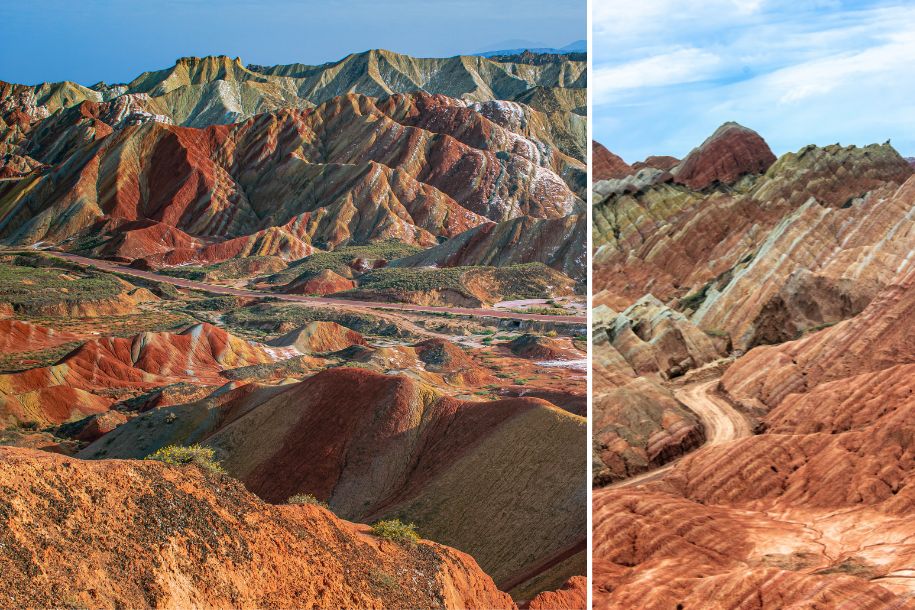
Zhangye Danxia Rainbow Mountains, Gansu
Zhangye’s Danxia landscape features precipitous red cliffs, many reaching several hundred meters high, and multi-coloured ridges of weathered strata that often stretch to the horizon. These sedimentary layers, formed over thousands of years due to changes in sedimentary environments, exhibit shades of red, purplish red, yellowish green, grayish green, and gray. Across the Danxia landscape zone, a kaleidoscope of numerous red rocky outcrops resemble an array of shapes, including castles, cones, and towers, as well as human figures, creatures, birds, and beasts. Their peaks piercing through mist and clouds create mirage-like scenes of fantastical mountains and pavilions.
Best Time to Visit: From June to September.
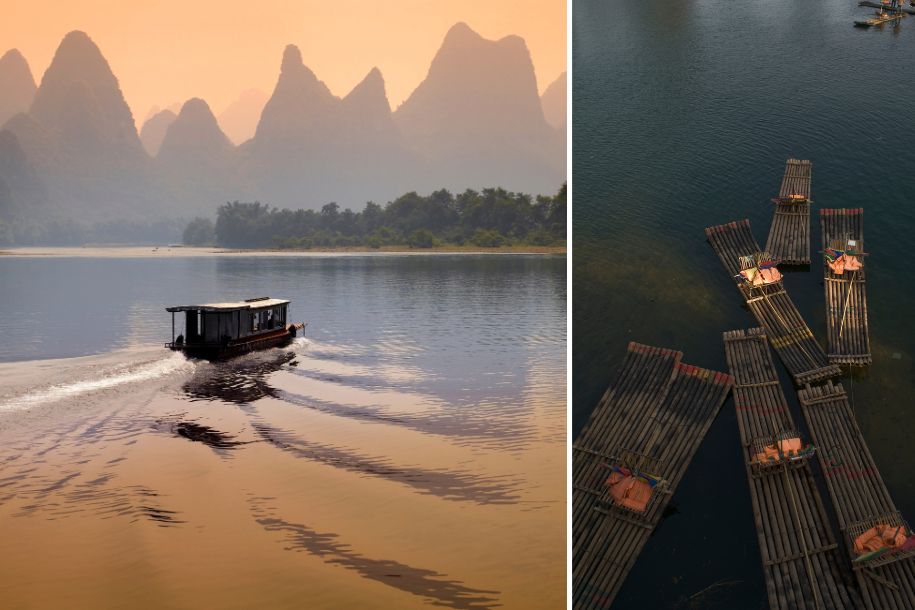
Li River, Guilin
The Li River, one of China’s most famous scenic areas, has been recognized as one of the world’s top ten watery wonders by National Geographic Magazine and was named one of the “World’s 15 Best Rivers for Travelers” by CNN. Its landscape, adorned with rolling hills, steep cliffs, fantastic caves, and leisurely boats lined with bamboo, forms a strikingly beautiful scenery that has been a key motif in Chinese art and literature since classical times.
Best Time to Visit: From September to November.
Places To Visit In China For History, Culture & The Best Time To Go
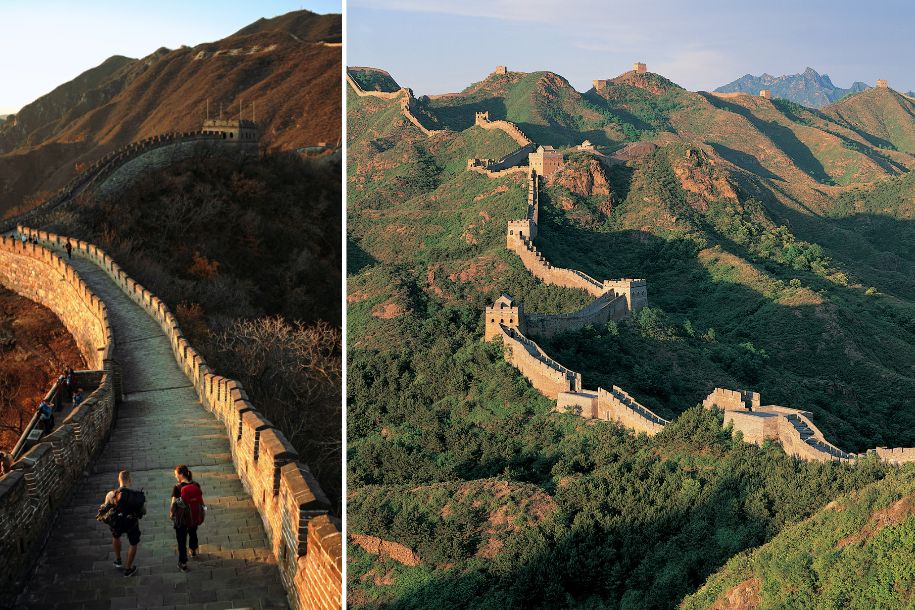
Great Wall Of China, Beijing
The Great Wall of China, stretching approximately 21,196 kilometres from west to east, is the world’s largest man-made project and a series of ancient fortifications in northern China. Though called a “wall,” it is an integrated defense system comprising lofty and solid walls, massive signal towers, barriers, barracks, garrison stations, and fortresses. For thousands of years, this insurmountable line protected ancient Chinese states against nomadic tribes from the northern steppe.
Best Time to Visit: From April to June or September to November.
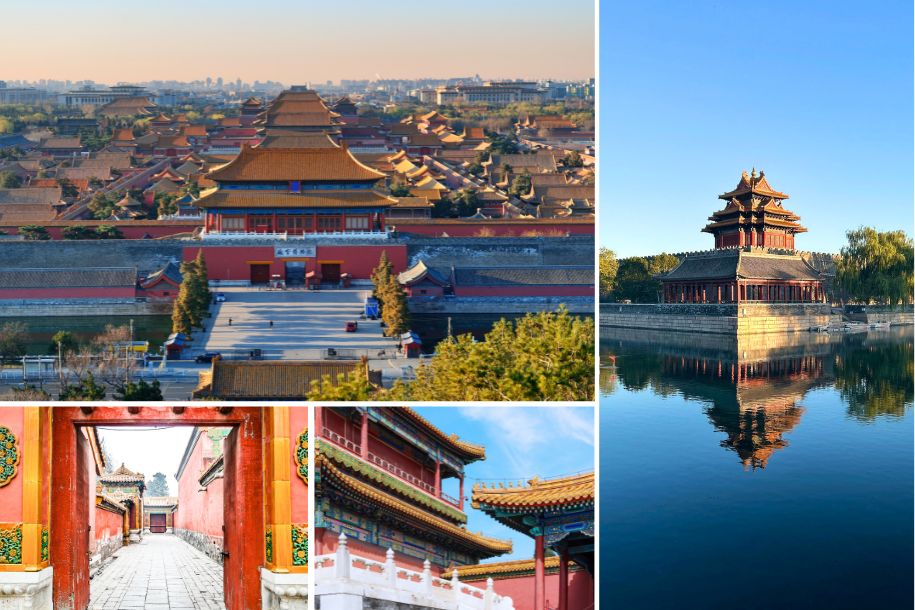
Forbidden City, Beijing
The Forbidden City, also known as the Palace Museum, lies in the city center of Beijing, and was once the Chinese imperial palace of the Ming and Qing Dynasties (1368 – 1911). The Forbidden City, covering an area of 72 hectares, and boasting more than 9,000 bays of rooms, was home to 24 emperors and their families and acted as the ceremonial and political center of ancient Chinese government throughout 500 years.
Best Time to Visit: From April to June, or September to November.
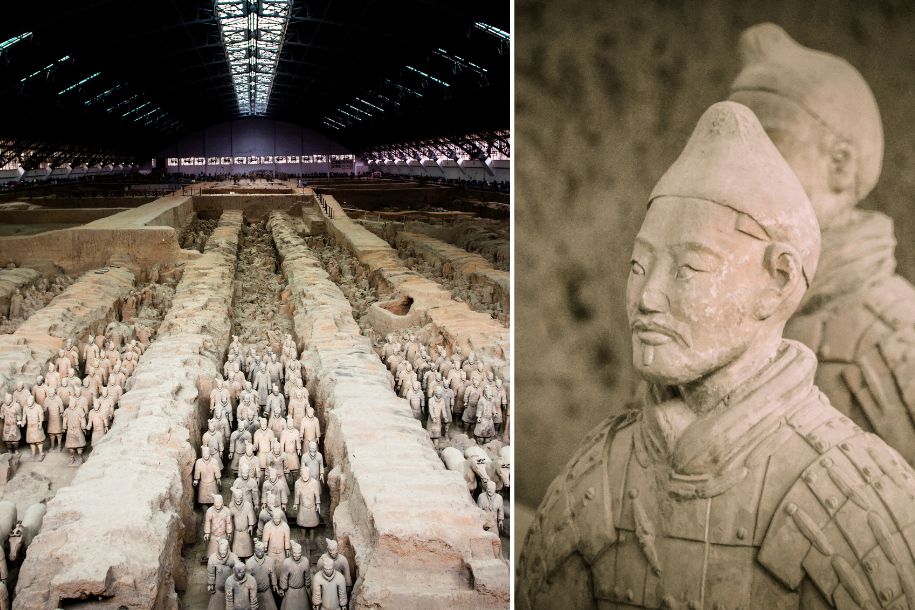
Terracota, Xian
The Terracotta Army in Xi’an, also known as the Terracotta Warriors and Horses, is a vast collection of life-size terra cotta sculptures depicting the imperial guard troops of Emperor Qin Shi Huang (259 – 210BC), the first emperor of unified Imperial China. This archaeological marvel, recognized as a UNESCO World Heritage Site and one of the most significant excavations of the 20th century, is a must-see for every visitor to Xi’an.
Best Time to Visit: From April to June, or September to November.
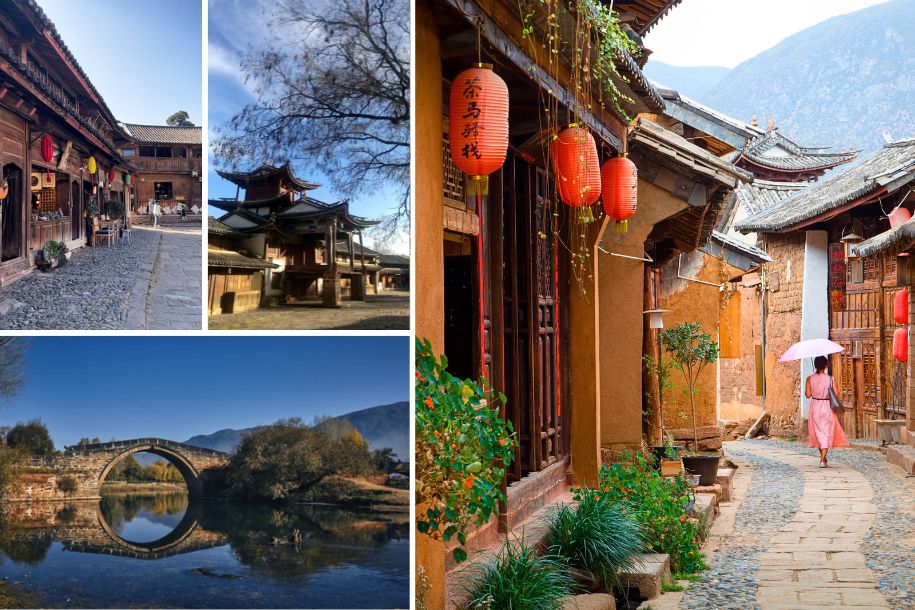
Shaxi Ancient Town, Yunnan
Shaxi, originally established as a trading hub along the Tea Horse Road, flourished with diverse homemade goods and welcomed passing caravans with hospitality. Over time, local families improved their homes, some of which still feature walls made from dirt, stones, and straw. Despite the Tea Horse Road being replaced by modern trade routes, Shaxi has retained much of its original charm. Among China’s ancient towns, Shaxi is celebrated for its preserved historic authenticity, exemplified by the Ouyang Courtyard. Once home to a prominent family and leaders of the caravan trade, it offers a glimpse into the architecture of the past.
Best Time to Visit: All year round.
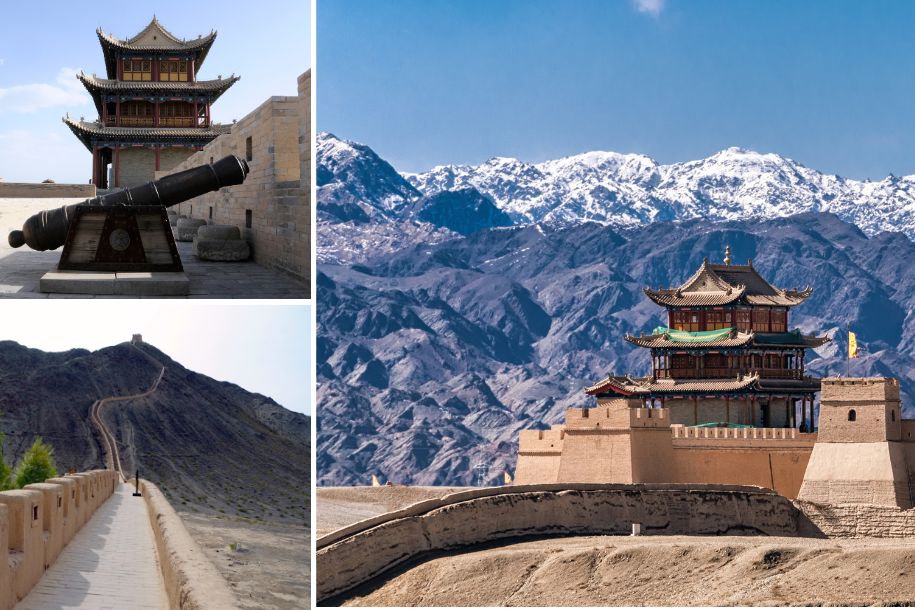
Jiayuguan Pass, Gansu
The starting point of the ancient Ming Dynasty Great Wall held strategic importance in guarding China’s far north-western region. Situated at the narrowest point of the western Hexi Corridor, a crucial defensive frontier since the Han Dynasty (BC 202—220), it served as a vital military fort. Ming Dynasty troops stationed here defended against nomadic invasions.
Military defence aside, Jiayuguan Pass also served as a pivotal waypoint along the ancient Silk Road, regulating the flow of wealth into and out of China. Goods were transported to Central Asia and Europe via this pass, fostering cultural exchanges encompassing religion, art, and customs.
Best Time to Visit: From May to October.
Now that you’ve explored China’s top highlights, we hope you’re inspired for your first holiday in the country. Aside from destination highlights, you may have other questions about vacationing in China. Here are some of the most commonly asked questions about traveling to China.
How Many Days Should You Spend In China?
Depending on the city and its attractions, you should plan to spend between 2 to 4 days in each location. On average, a 10-day, 9-night customized tour package to China typically allows exploration of main highlights in up to 3 different cities.
For a more comprehensive exploration of a city and its surrounding towns within a province, you might want to allocate approximately 7 to 8 days per province. This allows for a combination of visits to the main city center and off-the-beaten-path highlights that the province offers.
Is There A Time To Avoid Visiting China?
When planning your trip to China, we recommend avoiding certain times of the year—specifically major holidays. While these periods are bustling with tourism activity, they are also peak times for domestic travel, resulting in crowded attractions, busy train and road transfers, and congested domestic air travel. Therefore, we advise against planning your visit during the following periods:
- Chinese Lunar New Year: A week-long holiday occurring between late January to mid-February, following the lunar calendar.
- Labour Day: Typically observed with a week-long holiday from 1 to 5 May.
- Golden Week and National Day: Celebrated from 1 to 7 October, with a week-long holiday.
What Is The Main Language Spoken In China?
The main language spoken in China is Mandarin, also known as Putonghua. Throughout most of China, you can communicate with people in Mandarin. In international hotels, there are staff members who can speak English and assist you if needed.
What Is The Best Season To Travel To China?
China’s climate varies greatly due to differences in latitude, longitude, and altitude, resulting in five distinct climatic zones.
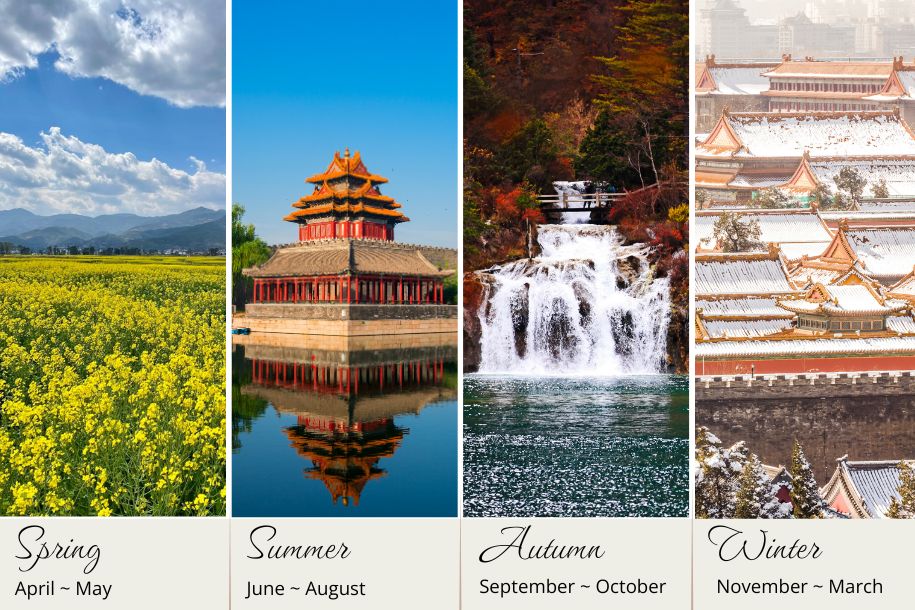
In general, the best seasons to visit are spring (April to June) and autumn (September & October). However, spring may begin later in northern China due to these diverse climate zones, so the mentioned months are a general guideline. Once you’ve chosen your destination, our China Travel Specialists can provide specific advice on the optimal time to visit that area.
Do You Need A Private Tour Guide?
If you speak Mandarin, it is possible to explore parts of China on your own. However, having a personal guide can significantly enhance your travel experience, especially when the attraction is rich in historical stories. To better explain the benefits you get on private tour, we will use the Forbidden City as an example.
Save Time Navigating Places – While conversational Mandarin may be manageable for most Singaporeans, driving in China can be challenging due to left-hand drive vehicles and road signs in Mandarin. Having a personal driver and vehicle removes the stress of navigating from your hotel to one of the many entrances at the Forbidden City, learning new traffic rules, and adapting to different driving styles in various cities. This way, you can focus on enjoying the city sights or resting between attractions, conserving your energy for the most important parts of your trip.
Experiencing Unmissable Highlights – In China, the scale of attractions are huge. For example, the Forbidden City spans 72 hectares and contains over 9,000 rooms, making it easy to get lost. A personal guide can save you time by efficiently navigating the attraction and highlighting must-see areas. This ensures you don’t waste time getting lost and put your hours into exploring more areas during your travels.
Understanding the Attraction – Many attractions in China are deeply connected to its historical dynasties. For example, the Forbidden Palace can be better appreciated if you understand its design, the longevity of its buildings, and how royalty used its spaces. With a personal guide dedicated solely to you and your family or friends, the experience is more intimate and informative. Unlike larger groups where it can be difficult to hear, a personal guide ensures you catch every story and detail. You can freely ask questions and gain deeper insights into the attraction. This narration brings history to life, allowing you to imagine the palace in its glory days. This makes your visit not just a trip where you have ‘been there,’ but a rich, immersive experience that reveals the true essence of the Forbidden Palace.
Flexibility In Your Daily Program – On a private tour, you have some flexibility with your itinerary. Unlike traditional tours, we don’t set rigid time limits on sightseeing. If you reach an attraction where you want to spend more time, like admiring the architecture of the Forbidden Palace, or spending some time at one of the beautiful courtyards, we can accommodate that as long as it doesn’t impact the rest of your day’s plans.
Unlike traditional tour packages, we tailor your daily program to match your travel pace. If you prefer slow travel, we allow more time for exploration between attractions. For those who prefer to maximize their experience in China, we can include more activities while ensuring you have ample time to fully explore each attraction without feeling rushed.
Zero Compulsory Shopping Stops – Unlike traditional fixed package tours, we do not include compulsory shopping stops in your itinerary. Our guides follow a ‘strictly no shopping’ rule, focusing their efforts and time on showing you the true side of China rather than tourist traps. If you wish to buy something, our guides are happy to provide genuine recommendations and direct you to reputable shops, ensuring you get quality products. Any shopping you do is entirely for your benefit, as we do not receive commissions or payments from your purchases.
Are Cash And Credit Card Commonly Accepted?
Shops, hotels, and establishments with more foreign guests typically accept international credit cards linked to Visa, Mastercard, and American Express. However, when traveling outside main city centers or shopping at smaller shops, payments via WeChat (wei xin) or AliPay (zhi fu bao) are usually preferred. Increasingly, shops are more open to accepting cash payments as well. We recommend setting up either WeChat Pay or AliPay (also available on The Changi App) before your visit to China. These payment applications can be easily linked to your Singapore or international credit card, as well as multi-currency wallets like YouTrip, Revolut or Wise.
How Do I Maintain Communication Via Whatsapp, Google And Other International Mobile Apps?
There are three main ways to maintain contact via international mobile applications such as WhatsApp, Google, Safari, and banking apps when traveling across China:
- Data Roaming: For Singaporeans, subscribing to data roaming from your Singapore telecommunication company allows you to use all your mobile applications as usual.
- E-Sims or Travel Sim Cards: Selected vendors offer e-sims or travel sim cards with different data packages that enable you to continue using WhatsApp, Google, and other international mobile applications.
- Local WiFi Connectivity: You can use local WiFi in combination with a VPN installed on your mobile phone, giving you access to international applications. Without a VPN, you will be limited to using only Chinese mobile applications like WeChat and Alipay.
Should I Worry About Toilet Facilities?
During our recent trip in early 2024, we observed significant improvements in both urban cities and remote rural areas of China. Gone are the days where you have to make do with half-open toilets, doorless or lock-less cubicles or hole-in-the-ground toilets. While not all facilities may meet the standards of luxury shopping malls or Changi Airport in Singapore, they are generally clean and functional.
International hotels and high-end shopping malls provide cubicles with sitting toilet bowls. However, in other locations, squatting toilets are more common especially in the ladies, with occasional availability of cubicles equipped with sitting toilet bowls. Therefore, ladies should be mentally prepared to encounter places with only squat toilets during the trip.
On our customized trips, we make efforts to plan proper toilet stops, especially on routes that venture off the beaten path, to ensure comfort. Our travel consultants will also provide tips on managing restroom situations during trip planning, addressing any concerns you may have.
Say Hi To Our China Travel Specialist!
We hope this guide has been helpful and provides a foundation for your exploration of China. At its core, travel is about the journey itself. While travel has become more accessible, we believe in journeying to learn, immerse in new cultures, understand history, and broaden horizons—embracing unexpected surprises and adventures rather than merely ticking off destinations.
If this resonates with you and you’re seeking a Singapore travel agency offering customized private and luxury tour packages to China, you’ve come to the right place!
As mentioned earlier, China’s vastness means it takes multiple trips to fully explore its magnificent sights and we won’t be able to mention all the places to visit in one page. If you don’t see a specific destination mentioned here, it doesn’t mean we can’t take you there. We encourage you to connect with our China Travel Specialist to delve deeper into the areas you wish to visit and tailor the best itinerary for your journey. Start chatting over Whatsapp at +65 81580078!


